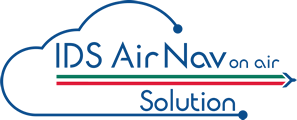AIRSPACE DESIGN
Air traffic utilizes specific areas of airspace, routes and waypoints. These are designed and maintained by Air Navigation Service Providers (ANSPs) and need to be compliant with ICAO / US or local criteria. This means that the space used for flight operations needs to be regularly maintained for safe operations, and lateral and vertical separation need to be performed.
This can be time consuming and easily be a source of errors if manually performed. The IDS AirNav Airspace Designer solution greatly reduces the time needed to design airspaces and routes and can also improve safety by providing a higher level of data quality and integrity.
Airspace Designer
A FAST AND ACCURATE GIS SOLUTION FOR AIRSPACE AND ROUTE DESIGN AND MANAGEMENT
Airspace Designer is an AIM (aeronautical information management) software tool that aids Air Navigation Service Providers (ANSPs) with performing airspace and route design and management. It also allows the management, creation and editing of airways, waypoints and bounded airspaces.
Definition of new geometry of airspaces for a safe operations can be easily performed with a fully configured steps and parameters. Airspace designers are presented with a geographic information system (GIS) environment for flexibility and provided with a suite of geodesic utilities along with aids for obstacle analysis, and vertical and horizontal separation, as well as import and export functions.
Airspace Designer uses a project workspace concept that allows the user to separately manage different projects by archiving and historically addressing different working environments. The user can define the structured data set for each project (work space name, effective date, bounding box, etc.). Airspace Designer can also reference a non-structured data set related to the project (thematic layers, terrain, images, etc).
Airspace Designer includes construction rules based on and compliant with PANS-OPS (ICAO doc. 8168 and ICAO annex 11) and:
- Creates obstacle protection areas for all types of airways and routes.
- Allows users to perform terrain and obstacle assessments by importing and utilizing digital terrain data relevant to procedure design, in any known projection, datum or resolution/accuracy.
- Allows users to perform an analysis of the lateral and vertical separation between airspace and airways/routes.
- Stores all data in a central AIS database, IDS AirNav’s AeroDB, including usage and services.


